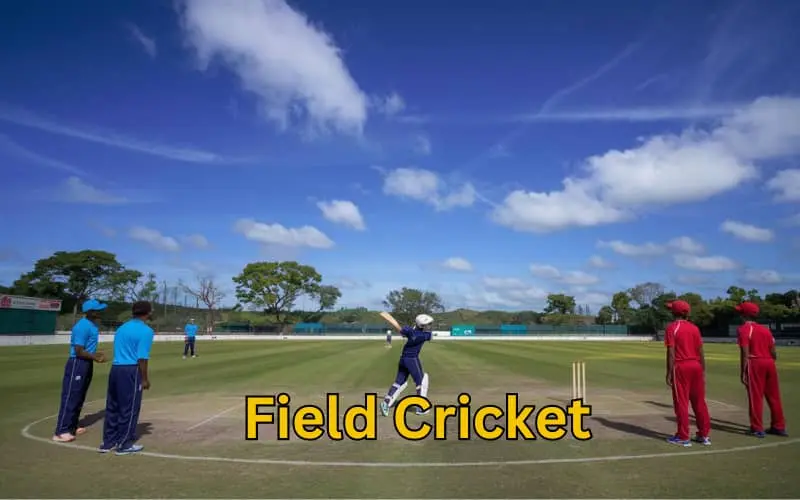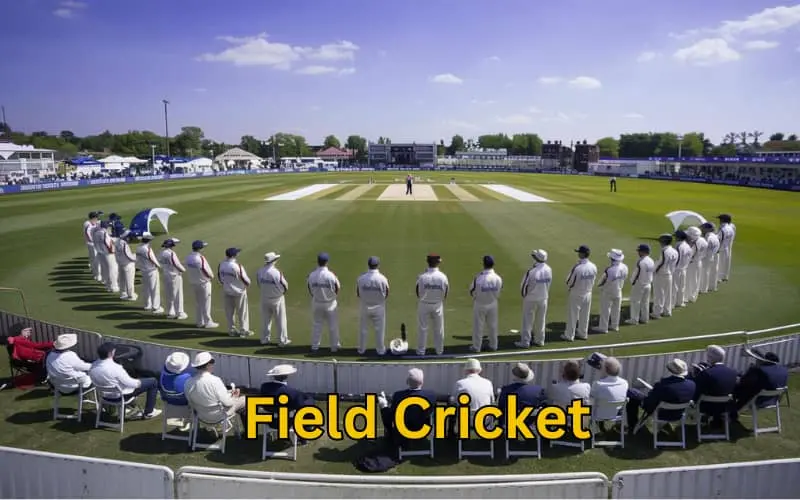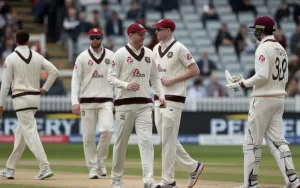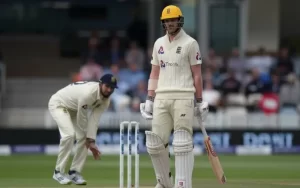Field cricket demands skill, teamwork, and strategic planning. Fielding is vital in cricket, requiring agility, quick thinking, and skill to influence match outcomes by preventing runs, taking catches, and putting pressure on the batting side.
In this article, we will dive deep into field cricket, explaining the game’s structure, the different roles in the field, and the strategies used by teams to gain an edge over their opponents.
What is Field Cricket?
Field cricket involves players positioned strategically around the ground aiming to prevent the batting team from scoring runs by effective fielding, speedy returns, and seeking dismissals such as catches and run-outs.
The fielding team consists of 11 players, each positioned strategically around the field depending on the type of bowler, the batsman’s strengths, and the game situation. Success in field cricket requires the coordination of all players, fast reflexes, and sharp decision-making.
Key Roles in Field Cricket
In field cricket, each fielder has a specific role, determined by their position on the field. Let’s explore the key fielding positions and what each role entails.
Wicketkeeper
The wicketkeeper is perhaps the most specialized and critical position in field cricket. Positioned directly behind the stumps, the wicketkeeper’s role is to catch the ball if it passes the batsman, stop any deliveries that the batsman misses, and effect stumpings and run-outs. A good wicketkeeper must have quick reflexes, excellent hand-eye coordination, and be alert at all times.
Slips
Slips are fielders positioned next to the wicketkeeper, angled slightly toward the offside. They play a crucial role in catching edges from the batsman’s bat, aiming to dismiss the batsman quickly. Their quick reactions and sharp reflexes are essential for capitalizing on any mistakes made by the batsman.They are responsible for catching edges or deflections from the batsman’s bat, particularly off fast bowlers. In field cricket, slip fielders must be sharp, quick to react, and possess strong catching skills. Depending on the game situation, teams may position multiple slips in a “slip cordon.”
Gully
In cricket, the gully fielder positioned between slips and point is crucial for catching awkwardly edged balls. This role demands rapid reflexes and keen anticipation, making it necessary for the fielder to intercept fast balls effectively.
Point and Cover
Point is a fielder stationed on the offside, perpendicular to the batsman. Cover stands slightly in front of point, further toward mid-off. These fielders focus on stopping square shots, cut shots, and cover drives, which are typically hit with power. Players in these positions must have strong throwing arms and be capable of diving to stop balls from racing to the boundary. Their quick reflexes and agility play a crucial role in preventing runs and maintaining pressure on the batsman. Players in these positions must have strong throwing arms and be capable of diving to stop balls from racing to the boundary. Their quick reflexes and agility play a crucial role in preventing runs and maintaining pressure on the batsman.
Mid-off and Mid-on
Mid-off and mid-on are fielding positions directly on either side of the bowler, closer to the pitch but a few yards back in fan 2 play rummy. These positions require players who are alert to possible quick singles or drives. They must be ready to cut off the ball or field any drives played by the batsman. Often, captains or senior players field in these positions to offer advice to the bowler.
Deep Fielders (Long-on, Long-off, and Boundary Fielders)
Long-on and long-off are positioned near the boundary, while boundary fielders cover the outfield areas. These fielders focus on stopping powerful shots that travel toward the boundary, aiming to prevent runs. Their positioning allows them to react quickly to high hits and ground shots, making them vital for maintaining control over the game.Their job is to prevent the ball from reaching the boundary and catch any aerial shots. In field cricket, boundary fielders must have strong, accurate throwing arms to quickly return the ball to the center of the field and prevent the batsmen from running extra runs.
Short Leg and Silly Point
These are close-in fielding positions, often used when spinners are bowling. Short leg stands very close to the batsman on the leg side, while silly point stands equally close but on the offside. These fielders are there to catch balls that pop off the bat, often as a result of defensive shots. Fielders in these positions need to be fearless, as the ball comes at them very quickly.
Strategies in Field Cricket
While field cricket involves individual roles, it’s the collective strategy that can make or break a team’s performance. Here are some common strategies used in field cricket to gain a competitive edge.
Attacking Field
In an attacking field setup, more fielders are positioned close to the batsman to create pressure and increase the chances of dismissing the batsman through catches or run-outs. This strategy often comes into play when a new batter arrives at the crease or when the bowling team is on top and actively seeking wickets. By placing fielders in aggressive positions, the bowling side can force mistakes and capitalize on any opportunities that arise. Ultimately, this approach aims to disrupt the batsman’s rhythm and maintain the momentum in favor of the bowling team.
Defensive Field
A defensive field is set when the bowling side aims to restrict runs rather than take wickets. In this scenario, fielders spread out along the boundary or position themselves in areas where the batsman is likely to score runs. Consequently, this strategy commonly comes into play when the opposition is chasing a large total. By adopting this approach, the bowling team focuses on minimizing scoring opportunities and maintaining control over the game. Ultimately, the goal is to limit the batsman’s ability to find gaps and accumulate runs effectively. Moreover, the bowling side needs to prevent boundaries to maintain control of the game. By adopting this approach, the team can effectively limit scoring opportunities and create pressure on the batting side. Ultimately, a well-executed defensive field can play a crucial role in the match’s outcome.
Field Placements for Spinners vs. Fast Bowlers
Field placements vary significantly depending on the type of bowler. For fast bowlers, teams typically use slips, gully, and close catchers to take advantage of edges and catches. In contrast, for spinners, more fielders are positioned in catching spots like short leg and silly point to capitalize on the batsman’s defensive mistakes. This strategic adjustment allows the fielding side to maximize their chances of taking wickets and restricting runs effectively. By understanding the strengths of each bowler, teams can optimize their field placements for better results.
Rotating Fielders
During the course of the game, teams frequently rotate their fielders depending on the game situation. Players may switch between boundary and close-in positions to maintain freshness and minimize fatigue. Strategic fielder rotation ensures that the best fielders are in the right place at the right time.
Conclusion
Field cricket is a vital component of the game, requiring skill, strategy, and teamwork. Understanding the roles and strategies involved in fielding can give a team the upper hand, helping to restrict runs, create pressure, and take wickets. Whether you’re a beginner learning the basics or an experienced player looking to sharpen your skills, mastering the art of fielding in cricket is essential for success on the field. With the right combination of sharp reflexes, strategic thinking, and a strong sense of teamwork, any player can make a significant impact in the field.







